#agricultural residues
Explore tagged Tumblr posts
Text

Farmer Paper Innovated by Kalpana Handmade Paper
#Farmer Paper#Parali paper#Kalpana Handmade paper#Handmade Paper#sustainable farming practices#rice straw#wheat straw#Environmental Impact of Farmer Paper#Utilization of Agricultural Waste#paper manufacturing industry#agricultural residues#virgin wood pulp#Reduction of Agricultural Burning#environmental benefits of Farmer Paper#Sustainable Farming Practices#Crafting Farmer Paper
0 notes
Text

page 557 - can you imagine commodifying nature? Stamping your imprimatur on a seed or a gene? As if you were responsible for the thousands upon millions of generations of evolution that preceded your arrival. Heck, I'm not a hater, as if you were responsible for the creation of the seed, as if you were a Creator.
But those who harvest knowledge in this way aren't creators. They're scoundrels and thieves. Eager to gather the works of others, put them behind fences and hoard them. Men on walls with guns and all that only we usually just see the lawsuits.
Things behind walls; metaphorical walls, real walls, things, people.
#economics#economy#economists#capitalism#questions and exercises for discussion study and review#study#review#exercise#accumulate#accumulated percentage of families#family#money income#money#income#residual income#monsanto#seed#agriculture#trademark licensing#trademark#gene science#splice#creator#dungeon
15 notes
·
View notes
Text
adding these additions from @vaspider in the reblogs in because yes, allergies/celiac CAN actually be That Sensitive. two weeks ago I nearly had to go to the ER because I was in the same building as a popcorn machine dispensing buttered popcorn, using "dairy free" butter with artificial flavoring vaguely derived from casein/dairy butter for two minutes. i am allergic to the flu vaccine because the viruses are grown in chicken eggs. i am allergic to the very air in starbucks. my immune system can detect egg and dairy contamination in concentrations too small to be legally required to be labeled.
polyculture crops definitely are an improvement for the vast majority of people, but the impact on the minority people consists of symptoms ranging from "miserable and unable to work for a week" to "death". personally, I do support finding better/more sustainable agricultural practices to replace the Corn Monoculture TM, but it is in some cases a literal matter of life and death for products such as walnut-grown wheat and wheat-grown walnut to be clearly and properly labeled, and for those products to not be the only available and/or affordable options at any given grocery store.
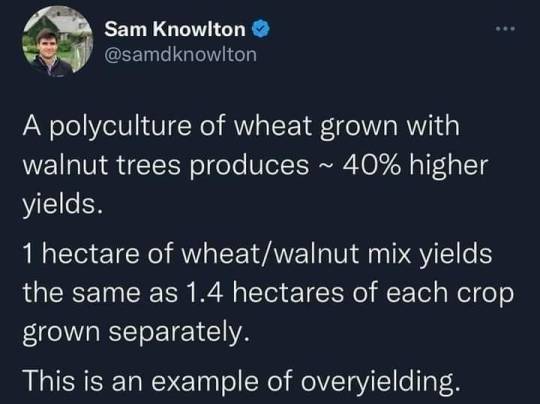

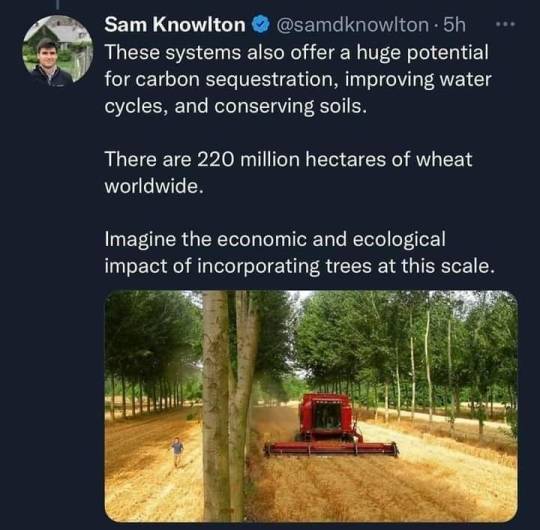
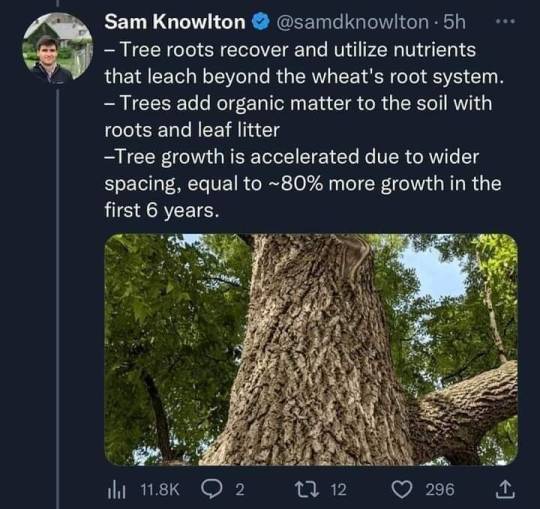
#text posts#agriculture#allergies#food allergies#problems#for non allergy people (or at least non-off-the-charts-anaphylactic allergy people) of whom i assume OP is one#imagine there is a field of lets say. lettuce#and in order to combat an infestation the farmer has decided to cover the field in rat poison pellets 24/7 for the entirety of its growth#and by cover i mean those poor lettuces are barely poking out of the sea of poison. every small animal within a two mile radius is dead.#and then the farmer harvests it#and *separating large leafy plants from poison pellets is easy enough right?*#and now you're at the grocery store. you see the Rat Poison Lettuces.#there aren't any poison pellets in the display box as far as you can see#but would you really still eat the Rat Poison Lettuce -_-#'there is functionally no danger of cross contamination' and yet there is 'functionally' no danger of half the situations i have reacted to#IF YOU CANNOT SAY THERE IS *NO DANGER AT ALL* YOU NEED TO TREAT IT LIKE A POTENTIALLY DANGEROUS SITUATION#it is approximately a one in a million chance last i checked to have *any* reaction to flu virus egg protein residue#meanwhile i had Instant Anaphylaxis#nobody i live with can eat eggs or anything overly cheesy in the house.#i have my own set of dishes and if you use a pot for eggs or dairy that is forever an Allergy Pot#which must be washed and stored separately from everythign else and never again used for anything in proximity to my food#not to mention that ops second post focuses entirely on wheat-contaminated walnuts and not walnut-contaminated wheat#when celiac can be one of the most sensitive food related immune disorders#AND every subsequent allergic reaction can increase the severity of your next one.#within ten years i went from 'stomachache from eating a full plate of contaminated food'#to 'i breathed in One Oxygen that touched a cheese once and i am trying very hard not to die in the middle of the sidewalk'#if youre going to dismiss every single person in the reblogs mentioning severe allergy risks please go inhale rat poison /s#apologies if this comes off as overly aggressive. cross contamination keeps nearly killing me and i feel overly aggressive right now
33K notes
·
View notes
Link
0 notes
Text
So. Modern industrialized agriculture uses a LOT of chemicals. Pesticides, herbicides, fertilizers. And we've known for a long time that the excess chemicals end up washing into the nearby waterways, and eventually to the oceans, sickening organisms and damaging ecosystems all along the way. But this actually shows where pesticides in particular are entering into the ocean, and in what quantities.
One really important point made in the article is that it really doesn't take much of a pesticide to do serious harm to living beings; the dose is the poison, after all. And while the oceans are large, they are not infinite; three million metric tons every single year can only be diluted so much. This is to say nothing of the residual pesticides left in the soil, and whose long-term ecological impact we are also still studying.
A lot of our current industrialized agriculture stems from the mid-20th century when it was just assumed there was a chemical to fix everything and bring farming into "modern times." This is why I get excited about regenerative agriculture and other practices that reduce the amount of chemicals needed while maintaining or even boosting harvests. Not only do they mean less pollution, but they also represent less product that a farmer has to pay for, which increases profit. Here's hoping that we can continue finding better, 21st century solutions to agriculture's challenges.
#agriculture#farming#pesticides#pollution#environment#environmentalism#conservation#science#ecology#scicomm#nature#regenerative agriculture
91 notes
·
View notes
Text
Prompts be here! ⬇️
1x10 coda
"Tell me something in Spanish," TK whispered into the quiet. The glow of the northern lights sparkled greens and blues through the sky above them. The residual heat from the camaros engine still seeping through the fabric of his thin grey hoodie.
Carlos cupped TK’s chin with his left hand and stared deep into the sea glass green eyes that had somehow become his undoing the last couple of months.
“No puedo vivir sin ti.” He softly spoke, his right hand squeezing tighter around their laced fingers
"What does that mean?"
"You're so cute," Carlos lied through his teeth.
"I can't live without you."
Xxxxxxxxxxxxxxxxxxxxxx
TK picked up the cowboy hat sitting on top of the box of stuff his mother-in-law dropped off at the loft for Carlos while cleaning her house.
“Is this yours?” TK asked with a glint in his eye.
Carlos licked his lips and glanced up from the duffle bag full of old clothes he’d long since grown out of.
“Yeah. Was in the 4-H club for a couple of years.”
TK slipped the faded white cowboy hat onto his head.
“What’s the 4-H club?” He asked, rummaging around in the box, flipping through a middle school year book.
“Like Boy Scouts for people who live on farms and do agricultural things, horses, livestock, but there’s also like, stuff about community and family.” Carlos answered after swallowing around the sudden lump in the back of his throat at seeing TK in his cowboy hat.
“Huh, I didn’t know something like that existed.” TK replied. “I mean, not like we had a lot of farms in Manhattan.” He chuckled and flashed a wink over his shoulder at his husband. “I’m sure you were the cutest cowboy.”
“Hmmm. I bet you don’t the cowboy rule either.”
TK turned around, questioning look on his face. “What’s the cowboy rule?”
“You wear the hat, you ride the cowboy.”
Xxxxxxxxxxxxxxxxxxxx
Season 2 vibes - Carlos POV
🎶it's not always rainbows and butterflies, it's compromise that moves us along
my heart is full and my doors always open, you come anytime you want
i don't mind spending everyday out on your corner in the pouring rain
look for the boy with the broken smile, ask him if he wants to stay a while
and he will be loved🎶
(Yes, I changed the pronouns, shut up)
32 notes
·
View notes
Note
Dear Żmija, do you know how to remove curses from objects? I swear whenever I wear my favourite earrings the day ends with me crying.
now, there are plenty of ways to rid an object of any evil that might reside within it - either by curse or bad luck, or a variety of other reasons - as this is the subject that folk magic predominantly deals with, and then as well one of my favourites. the three ideas I will list here are based on slavic magical customs - some modified when it comes to their complexity or scale, as we are talking about a small object here instead of a house, cow, or daughter - but do bear with me, as the issue itself deserves a bit more analysis than just a two-step instruction.
I assume 'the day ends with me crying' means that something bad happens other than just causing you to cry for no apparent reason - if that's wrong, please let me know and we can look at it from a different perspective.
first, why curse? curse assumes deliberation - do you believe there is someone who would want to harm you in such a way? or are the earrings themselves, for example, inherited from a family member or bought from someone and believed to carry some sort of residual curse within them? it's worth looking into this and especially into why you believe it might be a curse. sometimes those fears reside purely within ourselves, no curses necessary, and a careful examination of your own assumptions and worries yields the best results.
second, why are they your favourite? and does the fact that they are your favourite affect the frequency of you wearing them, or the occasions you choose to wear them for? if you wear them often, the chances of something going wrong are simply statistically higher. if you wear them for very important or stressful occasions, it only makes sense that you would be more susceptible to having a harder time with any possible, related failure. perhaps it's worth putting the earrings aside and carefully, as objectively as possible, examining the events that happen even without you wearing them.
and now, at last, if you would still like to do some good old magic, even if just to calm your mind and allow for further objective examination of the first two points, here are some of my favourite methods:
find in your vicinity whichever sambucus plant is native for your region - now, in slavic magic, this would usually be either sambucus ebulus (danewort) or sambucus nigra (elder). find a young flexible branch and without tearing it off or damaging it, bend it to make a loop. then, put your earrings through that loop three times - as they pass through, any widely understood evil will pass to the tree, and through its wild sacred roots back to the soil. and soil, sweetest mother, fears no curses and eats them up just as she will eat us up one day.
another method is to leave your earrings overnight in a fistful of grain, and then the next day take that grain and scatter it outside, where no people walk. the idea is both for the grain (one of the most sacred things we have, as the foundation of our nutrition and agriculture) to take the evil away, but also for the grain itself to be an offering to spirits (good or less so, depending on your own belief and situation regarding the curse) in the form of birds. where no people walk is important in the regard that someone stepping over that grain accidentally could transfer whatever evil to themselves, and that's just an unfortunate way to ruin someone's already bad monday. crucial! research the birds of your area and choose the grain itself carefully, so that you do not cause any harm to the animals and the environment.
and finally, you can also tie your earrings - the idea is that tying a knot on an object ties the evil within it as well. one way to do it is to use red thread - tie your earrings with it, make a knot, then remove the thread without untying it (you can unclasp the earrings, slide the thread off, whichever works, it doesn't have to be tied securely at all) and then burn the thread itself. otherwise, you can put your earrings in a piece of fabric and tie that bundle, and making sure the knot doesn't get undone, pull the earrings out (by cutting a hole in the bundle, for example). bonus points for sticking a needle into the fabric before you get them out.
best of luck, dearest stranger, and might you have no reason for tears any time soon.
186 notes
·
View notes
Text

Exploring non-wood cellulose fibers for sustainable textiles
In a world increasingly aware of environmental footprints, the textile industry stands at a crossroads, tasked with the challenge of sustainability. A recent study by a team of researchers at North Carolina State University offers a promising direction with their work on non-wood cellulose-based textiles. The study is published in the Journal of Bioresources and Bioproducts. Led by Ryen M. Frazier and Ronalds Gonzalez, the study explores the feasibility and potential of non-wood feedstocks for producing man-made cellulosic fibers (MMCFs), a sector traditionally dominated by wood-derived pulp. The research comes against a backdrop of escalating environmental concerns related to synthetic fibers like polyester, which currently accounts for over half of the fashion industry's market share. The study underscores the urgency of finding sustainable alternatives. As global textile production continues to rise, so does the demand for resources and the resulting environmental impact. The researchers highlight the potential of non-wood sources such as agricultural residues and dedicated fiber crops, which could offer a viable and eco-friendly alternative.
Read more.
14 notes
·
View notes
Text
Bad Days
Scully has an unexpectedly early period. Mulder and Scully talk about their lost sisters. Set some time in late season three. TW: Non-graphic discussion of menstruation.
Disclaimer: Contains brief discussion of femininity and menstruation, but obviously not all women menstruate and not all people who menstruate are women. Scully's comments reflect how I feel she would perceive her own personal relationship with femininity and her body as of 1996.
Edit: Friends, I made a dumb continuity error when it came to the timing of this fic. I fixed it. If only CC and the bunch had been as mindful of continuity then maybe we'd all be a little less insane today.
Dana Scully took pride in her ability to navigate the patriarchal landscapes of both law enforcement and medicine and retain a degree of femininity. She’d been keeping up with her brothers since birth - tomboy Dana shooting and cursing with the best of them when she wasn’t wiping the floor with them academically - but she was grateful to her mother and to Melissa for teaching her that masculinity was not the same as strength, power, or intelligence. It allowed her to deal with the idle comments during rounds from older physicians about how the female medical students were only going to get pregnant a few years into practice and go part time anyway. She was able to turn her frustration at being called “sweetheart” and “short stack” by the tactical defense instructors at Quantico into enough force to land them flat on their back in the next breath. There’s not a leer or a comment from any backwoods deputy that would ever, ever, keep her from conducting her work to the best of her abilities, even in three inch heels. She was woman, hear her roar.
Some days, however, she still felt like tearing out her uterus and throwing it into a garbage disposal. Today was one of those days.
She and Mulder had been called out to Weatherford, Oklahoma to investigate the deaths of three young men on the same day. All found in the middle of different fields with full-thickness burns over more than 95% of their bodies, severe lung damage, and no evidence for how they got there. No tracks, no disturbed vegetation - it was as if they’d fallen from the sky. Obviously, Mulder suspected UFO activity, but she was more intrigued by the whitish residue found on the burned young men. Three days of autopsies, interviews, and tromping around more dusty wheat fields than she’d care to count, and she’d found the connection - mass spectrometry analysis of the residue showed that it was primarily made of ammonia-heavy compounds. It turned out that the men had all served prior sentences for methamphetamine production. By all outward appearances they were walking the straight and narrow, but the residue was enough to link them to a series of thefts of agricultural anhydrous ammonia tanks. Apparently, their last job went horribly wrong - a tank ruptured and sprayed them all with concentrated ammonia. All it took was asking around the local hospitals if they’d recently treated anyone else for chemical burns to find two other members of the theft ring who admitted to panicking and dumping the bodies off of tractors driven along previously existing tracks.
Today had been the last day of the investigation, and she’d woken up with a familiar ache in her lower back and blood on her underwear a full week earlier than expected. Ever since her abduction her periods had been occasionally irregular. It was getting better with time, but she still cursed the fact that she hadn’t prepared for this when packing. They still faced a day of finalizing reports and statements before their flight home tomorrow, and if something could have gone wrong, it did. The stash of tampons and ibuprofen that lived in her overnight bag was dangerously low, and she’d had no time to stop into the town’s only drug store on the way to the sheriff's office. The office clerk had mislaid the original mass spectrometry analysis from the third victim, requiring a lengthy game of phone tag with the county lab. One of the suspects started making noise about revoking his statement culminating in a very frustrating conversation with him and his lawyer. All the while her cramps worsened as the day wore on. She tried to massage her low back when she thought no one was looking and masked the twinges of pain from surprise cramps. Mulder cast her a questioning look once or twice but she waved him off as they both tried to tie up the loose ends of the case. By the end of the day she was on both her last tampon and her last nerve.
Finally they were finished and back at the motel. Scully set her briefcase down, shrugged off her coat and blazer, and flopped down face-first onto the bed. She heard the door connecting her room to Mulder’s unlock and crack open, followed by the sound of him dropping his own belongings. She really should get up and get the car keys from him to run to the drug store before it closes, she remembered thinking, but the bed was surprisingly soft and the pressure on her abdomen from lying prone felt so good that the next thing she knew she felt a warm hand gently rubbing her shoulder.
“Scully, hey…”
She abruptly rolled over to see Mulder looking down at her from the edge of the bed with a crooked smile. She sat up and pushed the hair out of her face, embarrassed that she’d passed out without even taking off her shoes.
“God…I’m sorry, I must have fallen asleep.” She rubbed her face and checked her watch - eight-thirty PM, if she was lucky she could still get to a store before they closed for the night.
She scooted to the foot of the bed and stood to grab her coat, “I needed to run an errand earlier - do you have the keys? I might have enough time before the stores close.”
He rose and called after her, “Wait, before you go - when I saw you’d fallen asleep I went ahead and got dinner.” He gestured at the takeout boxes on the dinette set, which she could smell contained orange chicken and fried rice.
He paused and looked sheepish for a moment before holding out a white grocery bag to her. “I, uh…I picked up a couple other things, too. You might want to take a look before you bother going out.”
She cocked an eyebrow at him, dropped her coat back on the chair and took it. Inside she found a box of tampons - not just any tampons, her preferred brand of tampons, as well as two Dove dark chocolate bars, a bottle of ibuprofen, and a travel-sized electric heating pad. Her first reaction was to raise her hackles, flashing back to the times Bill had teased her when he spied the wrappers from her pads sticking out of her backpack in middle school. But when she sharply met Mulder’s eyes she saw only innocent concern mixed with hesitation, like he was bracing for rebuke.
Her face relaxed as she softened and she sat back down with his gifts. “Mulder…thank you. But how did you know?”
His shoulders relaxed with a sigh and he sat down next to her, shoulder to shoulder. “You��ve looked uncomfortable all day, rubbing your back and stomach when you thought no one could see. You asked the precinct secretary if they had any Tylenol. You actually ate the chips that came with your sandwich for once.” He counted the tells off on his fingers as he spoke, and she couldn’t tell if she was more touched or annoyed by his perceptiveness. He continued on with a wry smile, “We’ve worked together for three years, and maybe you don’t remember but before I was a paranoid crackpot I was a pretty damned good profiler. I notice things, Scully.”
She chuckled, “Well then, I don’t know if I should be impressed or embarrassed. It’s not something a lot of women broadcast, especially in our line of work.” She thought back to boyfriends past who’d at best tried to ignore the fact that she menstruated or at worst treated it like an annoyance. To the boys and men who joked about PMS and being ‘on the rag’ when women were rightfully angry about…well, about anything, at any time.
He shook his head gently, “No need to be embarrassed. I’m sorry you’re having a bad day.” His voice was gentle and earnest and pulled at her chest. Again and again, he humbled her with his capacity for kindness.
She returned his smile and placed one petite hand over his large one on his knee. “Thank you. Really, this means a lot.”
“No problem. Do you still need to run out?”
She shook her head, “No, actually, you seem to have taken care of everything. Want to eat?”
“I’m starving. Why don’t you get comfortable and I’ll make up some plates.”
She squeezed his hand and excused herself to the bathroom to change into an old t-shirt and leggings. When she emerged with a fresh round of NSAIDs on board he’d piled two plates with chicken, rice, and egg rolls and had pulled two beers frosted with condensation from the mini-fridge. He was in his dress shirt and slacks but had loosened the cuffs and unbuttoned the collar, tie, belt and shoes long since tossed aside into his room. Scully stole glances at him and tried to ignore his effortlessly handsome, boyish demeanor. That had been getting harder to do of late, and she pushed the thoughts aside for another time. She stacked some pillows against the headboard and plugged in the heating pad before settling back against it to wait for it to work its magic. He handed her a plate and a beer and sat next to her against the headboard, the both of them balancing their food on their laps.
He turned on the TV, flipped around until he found the opening scene of Ghostbusters, and glanced over at her for approval, which she gave with a wave of her beer. He grinned and clinked his bottle against hers, “Cheers.”
They settled back and dug in. The combination of the salty-sweet chicken, the heat radiating into her lower back, and the companionship of the man next to her suffused her with warmth. They didn’t speak for a bit while they ate and watched the movie, and before long she was full, content, and feeling more comfortable than she had for days. Mulder took the paper plates and utensils and disposed of them, then settled back next to her cross-legged against the headboard.
He gestured at the TV with a wry look. “Hey Scully, if we ever get shut down again we could always start up our own paranormal investigation business. What do you think, should we order some personalized jumpsuits?”
“Have you seen DC real estate prices lately? No way could we ever pull together enough capital to buy a decrepit firehouse. I’m not opposed to the jumpsuits, though, as much as I spend on dry cleaning.” she smirked back.
“Maybe Skinner would invest if it meant getting me out of his hair.”
She shot him a catty look, “Or lack thereof.”
He chuckled and tipped his head back to finish off his beer while she shifted the heating pad from her back to lie low across her hips. The warmth against her cramping muscles felt amazing, and she sighed and let herself sink further into the pillows behind her.
“Feeling any better?”
“Much,” she nodded, “Thank you, again.” She dug a chocolate bar out of the bag and unwrapped it, snapping off a few squares and passing them over to Mulder, who took them and smiled to himself. He looked almost proud. Loathe as she usually was to admit it, it felt good to be cared for. They’d both been brittle since the deaths of his father and her sister, leaning more on each other than even before. She had some of his spare clothes in her hall closet, he kept her favorite wine in his pantry. Sometimes it felt like they were the only two people in the world who really mattered. She knew that was patently false, that she had her family, but as the years went by and her friends had children or moved for their careers, she craved his company most of all. She thought of Melissa suddenly.
She chewed thoughtfully before starting, “Missy - Melissa - and I used to do this. Takeout, junk food, cheap wine, a cheesy movie when one of us was having a bad day.” She swallowed more than just the chocolate and met his eyes. “I miss her. She liked you, you know.”
He nodded sadly and took her hand in his, rubbing slow circles with his thumb in silence for a few moments. “When you were returned after your abduction and in the hospital, I was so angry that I couldn’t help you. She gave me a hell of a dressing down. A couple of times, actually. I thought she was even more disconnected from reality than I am.” He swallowed hard, remembering a time they both spoke of so rarely. “She was right, I deserved it. You two were lucky to have each other.”
She nodded and blinked rapidly. His eyes were cast down at his lap, lost in what she was sure were thoughts of guilt and blame for their losses. He was so quick to flagellate himself over things beyond his control. She squeezed his hand. “Mulder, you did help me. You always do. Melissa thought we were lucky to have each other to look out for each other.”
He still wore a hangdog expression but the corners of his mouth twitched up and his eyebrows unknit a bit.
She continued on, delicately, “You know what I think? I think Samantha was…is…lucky to have you. I think you would have done this for her, too, if you’d been allowed to. And I think one day you’ll get to hear it, one way or another. You’re a good brother.”
His breath caught and for a moment she thought she’d crossed a line but instead she found herself being pulled into a tight hug. She leaned into his shoulder and breathed in, relaxing into his embrace. He rubbed her back and kneaded for a moment before letting go, his expression now placid. “Thank…thank you, Scully. I hope you’re right.”
They hung in each other’s gaze for a moment before the bubble burst and she released his hand. She leaned her head against his shoulder to keep the connection going and they watched the movie in comfortable silence for a while. She considered the man by her side, so unlike any other man she’d ever known. What she didn’t tell him was that Melissa had also been ruthless about prying and prodding into her feelings for Mulder, and his for her. Maybe she was right about that, too, she thought, before chiding herself for dwelling on things that couldn’t be.
By the time Dana Barrett had transformed into the Gatekeeper her eyes were heavy and her limbs grew slack. She had slipped further and further down the headboard until her head rested on the pillows at Mulder’s side. The last thing she was aware of was the high whine of the TV being switched off and Mulder drawing a blanket over her. She stirred slightly in protest but as she drifted off she felt the brush of his lips on her forehead before hearing the click of the door to his room. She slept, warm, content, and loved.
#the x files#the xfiles#thexfiles#x files#txf#xfiles#msr#dana scully#fox mulder#x files fanfic#xfiles fanfic#xf fic#i just want Mulder and Scully to be safe and cared for is that really so much to ask#they have done nothing wrong and i love them#they deserve all the happiness in the world
21 notes
·
View notes
Text
Pumpkin Soup
Word count: 2'200+
Tagging: @bloodboundismylife @choicesfannatalie22 @velvet1753
Pairing: Adrian x MC (Amelia, Amy for short)
Warning: suggestive comment - nothing major

Summer brought many surprises, the unpredictability of the English weather being one of them. Having spent most of the Autumnal months in the familiarity of New York, Adrian managed to obtain a few weeks at the newly-founded London offices of Raines Corp, in the hope that he may oversee the transfer and adaptation of communications between the London and the New York branch. As an additional treat, Amy was able to accompany him, the latter forking out on a holiday let; a beautiful, rustic cottage located in the South-West of England, surrounded by miles upon miles of agriculture and woodland.
Having spent a couple of days in the city, Adrian pulls up onto the cobblestone driveway, dimming the headlights as he parks. As he removes the keys from the ignition, he takes a moment to sit back and admire the view before him; the property is cosy, its walls and foundations made from sandstone, narrow steps leading onto a sturdy patio. He looks up at the roof, the tiling somewhat immaculate for a building of its age. He smiles wistfully, collecting his laptop case from behind the seat before stepping out, quickly noticing the humidity in the air. A rumble of thunder catches him by surprise as he makes his way up the steps, sliding his case into one hand as he unlocks the front door with the other.
“Amelia?” He calls out into the hallway, slowly walking over to the staircase; he stops at the bottom, his elbow leant up against the banister, “sweetheart?”
“I’m in here!”
A soft voice carries through from the other end of the corridor, accompanied by the sound of a pot clanging against the sideboard. He quirks a brow, his intrigue leading him in that same direction.
Adrian enters the kitchen, where he is immediately met by the earthiness of basil, followed closely by a waft of thyme as Amy opens the oven door; she dons a pair of oven mitts, their ends tainted by hues of orange and brown, evidence of their previous endeavours. He watches from the doorway as she removes a ceramic tray from the heat, fumbling around blindly in her attempt to switch it off, the crockery seeming to increase in weight the longer it remains in her grasp. Sensing an impending disaster, Adrian moves to intercept, reaching for the dial; he turns it off, allowing Amy a chance to adjust her hand placement. She places it down on the chopping board, making sure that it is situated away from the edge before removing her gloves, using them to waft the steam in the direction of the window.
“If you do that any longer, we’ll have the entire neighbourhood on our doorstep asking for a piece.”
She wipes her floury hands down her front, “they’ll have to fight me for it.”
“The kitchen smells like a bakery,” he comments, glancing around the room; most of the appliances remain undisturbed by her efforts, but as Adrian pans around to the sink, the evidence is clear to see, doughy residue – now hardened – covering at least three kitchen cupboard handles, the occasional smear appearing in the creases of the sideboards and on the tap. Amy follows his gaze, a rosy flush seeping into her cheeks.
“I got a bit carried away, didn’t I?” She looks down at the floor, failing to conceal her grimace as she steps in a pile of gloop, the action not going unnoticed, “I didn’t realise it was so messy in here.”
“How did you manage to get it on the floor?”
“I don’t know,” she frowns, “it was all in the oven, the last time I checked.”
Adrian walks over to the stove, carefully removing the lid from a saucepan; he leans in, unable to resist sniffing its contents as he gives the amber liquid a stir.
“Is this butternut?”
“And pumpkin,” she moves to stand beside him, reaching for a discarded egg cup; taking her thumb and index finger, she retrieves a pinch of herbs, sprinkling the dried leaves into the soup, “with rosemary and coriander.”
“You’ve gone to a lot of trouble.”
“I wanted to at least try doing something productive today,” she smooths down her skirt, her fingertips fiddling with the hem, “is it too much? I-I’d understand if you wanted to get takeout.”
“Why would I do that?” He questions, leaning back against the countertop, his hands scrambling for purchase, “you’ve worked really hard on this.”
“It’s…actually my third attempt,” she trails off, glancing at the bin, “it looks like a vegetable massacre in there.”
“What happened the first two times?”
“I used coconut milk instead of cream,” she bites her lip, “and the second time, all the vegetables went down to the bottom and they burnt.”
She tilts her head in the direction of the sink, where a large pan lies discarded, blackened lumps of what appears to be the charcoaled remains of vegetable decorating the steel. Adrian cups his mouth, as if trying to refrain from laughter, but his attempt falls flat as a bemused snort escapes him, the sound failing to avoid Amy’s ears.
“I’m sorry, I shouldn’t have laughed at-” he quickly notices Amy’s dejected expression as she turns away from him, playing around with the tap, “hey…no, I…I didn’t mean anything by it.” He moves to stand behind her, smoothing his fingers down her forearms, only coming to a stop when his palms caress her own, “can I show you?”
“Sh-show me what?”
He retrieves the begotten pan, angling it just enough so that it captures the light; using his index finger, he etches an image into the burnt embers.
“It’s a face…see?” He points to each section in turn, “there’s the eyes…that’s his nose and that…is his mouth.”
Amy smiles sadly, gently removing the pan from his hands. She squirts some washing up liquid onto the charred remains, running it under the hot tap for a few seconds.
“I really wasn’t laughing at you, sweetheart. I’m sorry if that’s how you interpreted it.”
“It’s okay,” she sighs despondently, reaching for the scrubbing brush, “I know that deep down, I just…” she shakes her head, “I wanted to impress you.”
“You don’t need to try and impress me,” he speaks softly, reaching for the tie of her apron; he removes the article, only pausing to lift the ribbon from around her neck, his knuckles brushing against the nape of her neck, “I love you as you are.”
“I know you do, but I just wanted to try and achieve something without making a mistake first. Does that make sense?”
“Absolutely,” he nods, placing a tender kiss to the top of her head, “but we’re human. It’s only natural that we make a mistake or two. If we got things perfect all the time, would we ever learn anything?”
She shakes her head, “I guess not.”
He quickly pecks her temple, removing himself from her warmth before trudging over to the cabinet; he reaches in, collecting two soup bowls, his brows furrowed in thought.
“What are you thinking about?” Amy re-gloves her hands, mouthing something quietly to herself before turning the bread upside down onto the chopping board, “you look like you’re somewhere else.”
“Do you think we might benefit from using a pasta dish instead?” He holds one of the soup bowls above his head, “we would have plenty of room for the bread then.”
“It’s up to you,” she looks over at him, her smile brightening as she takes in his appearance; he is crouched down on the floor, his forehead wrinkled in concentration, as if his life depended on the decision that he is about to make, “whatever’s easier, Adrian.”
“I can’t decide,” he pouts, “small bowls would require less washing up.”
“But would allow for more crumbs,” she walks over to him, draping the tea towel over his head, “use the pasta dishes.”
He shakes the material off his head, the ridiculousness of this action eliciting a soft chuckle from Amy; she removes the saucepan from the heat, stirring its contents as Adrian walks back over to her. He places the dishes beside her, moving them closer to the pan as Amy begins to plate the food.
“Would you like some help?”
“You can stand there and look pretty.”
He wraps his arms around her midsection, rocking her gently from side to side as he presses kisses to her neck and shoulder, a mischievous smirk tugging at the corners of his lips.
“I do that every day,” he sighs in contempt, his gaze drifting from Amy’s face to their surroundings, as if memorising ever detail, “I really like it here.”
“So do I,” she opens a drawer, removing the bread knife from its sheath; she cautiously pierces the loaf, slowly withdrawing the blade as it slices cleanly through, “it’s a lovely place.”
“Would you live here? If our vocations were not an issue.”
The knife clatters against the wood; they both look at the window, their eyes meeting one another’s reflection.
“Are you serious?”
“Deadly,” he kisses the space behind her ear, “we both love it here, so why not?”
“But your company…”
“I’ve dedicated decades of my life to that place,” he buries his face in her sweater, closing his eyes as notes of jasmine and cherry blossom reach his nose, “it was my passion project; something that I cherished. Why shouldn’t I step back to pursue another?”
“Another passion project?”
“Mmmmm…” he hums in agreement, “do you agree?”
“What do you want to do?”
“You, preferably,” his eyes glaze over, tendrils of crimson swiftly replacing their usual brown hue; he tilts her face upwards, his knuckle grazing her skin as his hand moves downward, coming to a stop at the hollow of her throat, his voice devoid of volume as he leans in to whisper in her ear.
“You’re my new passion project, Amelia,” he presses his lips to the curve of her jaw, smiling against her skin, “I want to dedicate my time to our future. Marriage…children…we can have whatever we want.”
“Ch-children?”
He nods, “if that is what you want.”
“Is it something that you want?”
“I’ve thought about it,” he replies in turn, “I want to give you the world, if you’ll allow me. I’ll do anything and everything in my power to make that happen.”
He kisses her cheek, “we don’t need to discuss it now. I just wanted you to know that I have thought about what the future holds for us.”
“I appreciate that.”
She pushes herself up onto her toes, meeting his lips with her own before settling back on the balls of her feet; she plates the bread, holding out the dish for Adrian to take. He takes it with a grateful smile, taking a moment to gather cutlery.
“This looks and smells delicious, Ames.”
“I should hope it is,” she picks up a slice of bread, taking a small bite of the crust, “it took me three hours to get the recipe right.”
“Well, you’ve done amazingly as usual,” he beams brightly, guiding her by the small of her back to the dining table. They both take a seat on either side, too engrossed with the food to speak. They share a comfortable silence as they eat their meal, neither one saying so much as a word. It is only when Adrian begins to stack their dishes that he breaks the quiet, unable to hide his bemusement.
“What?”
He shakes his head, “nothing. It’s just nice seeing you so relaxed.”
“I am,” her smile softens, “I’m comfortable and full. There’s no better feeling.”
“Shame about the washing up, though.”
“What washing up?”
Adrian feigns scratching his temple, his eyes darting in the direction of the sink; she follows his gaze…
…to the pile of dirty pots and pans, piled clumsily in the sink.
She groans, her body slumping back in her chair; Adrian walks up behind her, chuckling softly as he places his hands on her shoulders, the pad of his thumbs massaging soothing circles into her skin. He bends over, kissing the top of her head.
“I’ve got this one.”
“A-are you sure?”
“You cooked, so it’s only fair that I wash up, is it not?”
Amy smiles tiredly, nodding.
“Go and get into your pyjamas,” he carries the crockery over to the sink, leaning against the counter, “there’ll be a nice and creamy hot cocoa waiting for you when you get back.”
Amy nods, the pair sharing one last look before Amy disappears out of the room, closing the door quietly behind her. Adrian waits until he hears her footsteps dissipate before turning back around, a loud sigh escaping him as he examines the messy kitchen around him.
“Couldn’t make it easy, could you babe?” He mutters under his breath, his expression softening as he starts to move the pots out of the basin and onto the side, only stopping when he feels something beginning to slip from his pocket. He manages to catch the object in question before it hits the ground, taking a moment to study the box as he undoes the clasp…
…revealing an engagement ring, adored with a handful of little diamonds, an oval-shaped ruby sitting comfortably in the middle.
“One more day,” he exhales slowly, re-situating the box in his breast pocket, “one more day.”
15 notes
·
View notes
Text
#Farmer Paper#Parali paper#Kalpana Handmade paper#Handmade Paper#sustainable farming practices#rice straw#wheat straw#Environmental Impact of Farmer Paper#Utilization of Agricultural Waste#paper manufacturing industry#agricultural residues#virgin wood pulp#Reduction of Agricultural Burning#environmental benefits of Farmer Paper#Sustainable Farming Practices#Crafting Farmer Paper
0 notes
Text

Ugandan women turn agricultural waste into biofuel to save trees
Every morning, Sheeba Kwagala and her colleague head to a sanctuary in the Ugandan capital of Kampala to mash agricultural waste, mainly banana peels and crop residues, with molasses and clay to make briquettes.
“We crush agricultural waste, then mix it with clay and molasses to solidify it. We put the mixture into a machine that forms the briquette. Learning how to make briquettes is easy, and I will share my skills with other women,” Kwagala, 20

Briquettes, a type of renewable energy source and a form of solid biofuel, are said to be more energy-efficient than wood or charcoal, largely used in the East African country.
Michael Kalyesubula, a chef at a restaurant in Kampala, told Xinhua that he now prefers to use briquettes instead of charcoal. “If we have meals using charcoal, which has a negative impact on the environment, it is not right. After we started using briquettes, we came to understand that they help us save the environment.”
He added that using briquettes has saved the restaurant money and energy for cooking. The restaurant used to spend 65,000 Ugandan shillings (about 17 U.S. dollars) a day on charcoal, but now it spends only 12,000 shillings on briquettes to cook meals for about 165 people.
https://www.independent.co.ug/ugandan-women-turn-agricultural-waste-into-biofuel-to-save-trees/
#solarpunk#solarpunk business#solarpunk business models#solar punk#reculture#africa#jua kali solarpunk#briquettes#agricultural waste#deforestation
15 notes
·
View notes
Note
I'm excited for season 4, but some of my favorite Snowpiercer characters never made it this far! 😭 So, will you help me imagine what they would be doing at the start of the new season if they hadn't been killed/forgotten??
So let's catch up with; Lilah and Robert Folger, Santiago, Jinju, annnnnndddddd Asha
So excited for season 4!!!!! Thanks for such a fun ask :)
Folgers: definitely stayed on Snowpiercer post-division. Lilah spends her days indulging in her favorite hobby (antagonizing Melanie) while Robert spends his time being relieved LJ's whirlwind marriage is over. If Lilah and Robert are still alive, then LJ (unfortunately) probably is, too.
Santiago: I like the thought of him reluctantly buddying up with Oz out of a mutual love of pickling. Mama Grande gives them recipe advice.
Jinju: goes to New Eden. Spends a lot of time clashing with Ruth over agricultural workforce organization. But then, one night, they bond over a bottle of terrible Tailie-made moonshine and shared memories/residual trauma of being Melanie's best friends. And then, perhaps? maybe? romance ensues...
Asha 💔: finally gets to feel the sun on her face in New Eden. Helps Javi and Alex with setting up a power supply/other stuff that the last nuclear technician in the world would probably be good at. Spends her free time drinking tea with her Ag Sec buddies and helping out with New Eden's first vegetable crop. Takes off her shoes, digs her toes into the earth, and breathes.
9 notes
·
View notes
Video
youtube
Autonomous Self-Burying Seed Carriers for Aerial Seeding
Aerial seeding can quickly cover large and physically inaccessible areas to improve soil quality and scavenge residual nitrogen in agriculture, and for post fire reforestation and wildland restoration. However, it suffers from low germination rates, due to the direct exposure of unburied seeds to harsh sunlight, wind and granivorous birds, as well as undesirable air humidity and temperature.
Here, inspired by Erodium seeds we design and fabricate self-drilling seed carriers, turning wood veneer into highly stiff (about 4.9 GPa when dry, and about 1.3 GPa when wet) and hygromorphic bending or coiling actuators with an extremely large bending curvature (1,854 m−1), 45 times larger than the values in the literature
Read more here or here from Nature
#biomimicry#seed bomb#seedbomb#seeds#seedlings#restoration#seed carriers#design#engineering#solarpunk
54 notes
·
View notes
Text
What’s Left on the Neolithic...plate?
ITA version ESP version
Sometimes, not having soap to wash the dishes thoroughly can be useful... especially if we want to uncover our past activities. It is thanks to the residues found in ancient ceramic vessels that a research team, composed of members from the Universitat Autònoma de Barcelona (UAB), the University of Zaragoza, and the University of Strasbourg, has revealed the first direct evidence of the consumption and processing of dairy products since the beginning of the Neolithic period, around 7,500 years ago.
The study utilised the remains of about thirty ceramic vessels obtained from two archaeological sites found in the caves of Chaves and Puyascada, located in the province of Huesca, Spain, to understand the usage and preservation habits of food. The researchers organised and classified the vessels according to various criteria, such as the type of profile, shape, cooking conditions, surface treatment, type of decoration, depth, and volume. Subsequently, lipids were extracted from the ceramic remains using a technique that employs acidified methanol, then analysed through gas chromatography and mass spectrometry.
Thanks to the morphological profiles, the researchers classified the vessels based on their function: preparation with or without heating, serving, and storage. Indeed, a group of ceramic pots was classified as suitable for food preparation, particularly for prolonged boiling thanks to the closed rims that prevent excessive evaporation. Others were suitable for pounding or stirring, as they have thick walls, which would be more resistant to heavy impacts. Regarding organic matter, the residues found in the vessels include ruminant fats, pork, plant products, and dairy, suggesting intentional mixing or subsequent uses.
Another group of small vessels was interpreted as serving containers, used for individual consumption of food and liquids. They could have been easily handled with one hand, so they were likely intended for individual use. The identified ingredients range from animal fats to edible plants and resins. Finally, a last group of vessels, with deep and closed necks, was considered ideal for storing liquids and low-fat foods, such as cereals and legumes.
The analysis of organic residues from the Chaves ceramics indicates that these were mainly used for processing ruminant meat, representing 50% of the residues, and dairy products, which constitute 28%. This is consistent with the mortality profiles of the animals at Chaves, which show that goats, cattle, and pigs were slaughtered young, during the so-called "optimum of meat". At Puyascada, on the other hand, the ceramics were mainly used for dairy products, which account for 54% of the organic residues, while ruminant fats only make up 27%, and pork fat is well represented at 36%. The low percentage of ruminant fats could be due to different preparation and consumption methods compared to Chaves.
The high percentage of dairy fats at Puyascada suggests a priority in the use of ceramics for milk processing. Additionally, the importance of pork fat, despite the low quantitative presence of the species, could indicate specific preparation of pork or its use as a fat reserve. The preparation and consumption of pork fat were widespread practices in Neolithic Iberia, with evidence in many archaeological sites. The data suggest that, while milk was processed and consumed at both sites, ruminant and pork fats were managed differently, reflecting distinct production and consumption strategies.
From the shape of the vessels and the organic residues, scientists have managed to offer a valuable window into the social dynamics and agricultural and livestock practices of Neolithic communities in the Iberian Peninsula.
Other previous studies confirm the production of dairy products in Europe during the Neolithic, but this is the first study that makes a direct comparison between neighbours, between caves located about 100 km apart, describing the diversity of lifestyles.
source: https://link.springer.com/article/10.1007/s12520-024-02001-9#Sec14
examples of ceramic vessels:
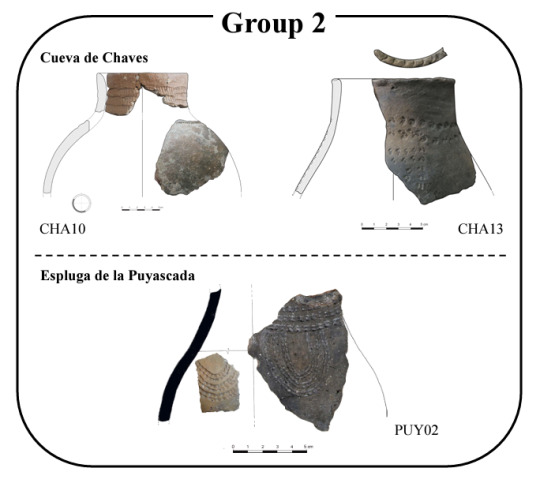
#Archaeology#Neolithic#AncientHistory#PrehistoricCulture#ScientificResearch#Discoveries#AncientPottery#OrganicResidues#PrehistoricFood#Spain#AutonomousUniversityOfBarcelona#UniversityOfZaragoza#UniversityOfStrasbourg
5 notes
·
View notes
Text
Good News - April 1-7
Like these weekly compilations? Support me on Ko-fi! Also, if you tip me on here or Ko-fi, at the end of the month I’ll send you a link to all of the articles I found but didn’t use each week - almost double the content! (I’m new to taking tips on here; if it doesn’t show me your username or if you have DM’s turned off, please send me a screenshot of your payment)
1. Three Endangered Asiatic Lion Cubs Born at London Zoo

“The three cubs are a huge boost to the conservation breeding programme for Asiatic lions, which are now found only in the Gir Forest in Gujarat, India.”
2. United Nations Passes Groundbreaking Intersex Rights Resolution

“The United Nations Human Rights Council has passed its first ever resolution affirming the rights of intersex people, signaling growing international resolve to address rights violations experienced by people born with variations in their sex characteristics.”
3. Proposal to delist Roanoke logperch

“Based on a review of the best available science, the U.S. Fish and Wildlife Service (Service) has determined that the Roanoke logperch, a large freshwater darter, is no longer at risk of extinction. […] When the Roanoke logperch was listed as endangered in 1989, it was found in only 14 streams. In the years since, Roanoke logperch surveys and habitat restoration have more than doubled the species range, with 31 occupied streams as of 2019.”
4. Fully-Accessible Theme Park Reopens Following Major Expansion

“Following the $6.5 million overhaul, the park now offers [among other “ultra-accessible” attractions] a first-of-its-kind 4-seat zip line that can accommodate riders in wheelchairs as well as those who need extra restraints, respiratory equipment or other special gear.”
5. ‘The Javan tiger still exists’: DNA find may herald an extinct species’ comeback

“A single strand of hair recovered from [a sighting] is a close genetic match to hair from a Javan tiger pelt from 1930 kept at a museum, [a new] study shows. “Through this research, we have determined that the Javan tiger still exists in the wild,” says Wirdateti, a government researcher and lead author of the study.”
6. Treehouse Village: Eco-housing and energy savings

““The entire place is designed and built to meet the passive house standard, which is the most energy-efficient construction standard in the world,” says resident Wayne Groszko, co-owner of one of the units at Treehouse.”
7. 50 rare crocodiles released in Cambodia's tropical Cardamom Mountains
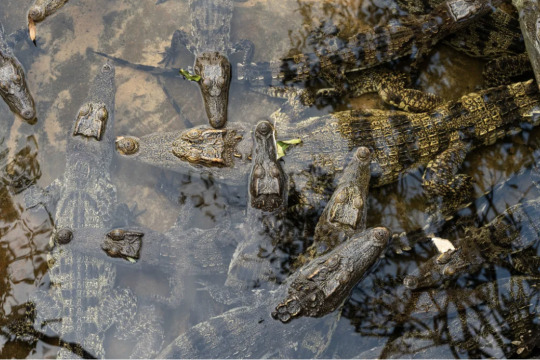
“Cambodian conservationists have released 50 captive-bred juvenile Siamese crocodiles at a remote site in Cambodia as part of an ongoing programme to save the species from extinction.”
8. The Remarkable Growth of the Global Biochar Market: A Beacon of Environmental Progress

“Biochar, a stable carbon form derived from organic materials like agricultural residues and forestry trimmings, is a pivotal solution in the fight against global warming. By capturing carbon in a stable form during biochar production, and with high technology readiness levels, biochar offers accessible and durable carbon dioxide removal.”
9. 'Seismic' changes set for [grouse shooting] industry as new Scottish law aims to tackle raptor persecution

“Conservation scientists and campaigners believe that birds such as golden eagles and hen harriers are being killed to prevent them from preying on red grouse, the main target species of the shooting industry. […] Under the Wildlife Management and Muirburn Bill, the Scottish grouse industry will be regulated for the first time in its history.”
10. White House Awards $20 Billion to Nation’s First ‘Green Bank’ Network

“At least 70 percent of the funds will go to disadvantaged communities, the administration said, while 20 percent will go to rural communities and more than 5 percent will go to tribal communities. […] The White House said that the new initiative will generate about $150 billion in clean energy and climate investments[…].”
March 22-28 news here | (all credit for images and written material can be found at the source linked; I don’t claim credit for anything but curating.)
#hopepunk#good news#lion#conservation#zoo#india#intersex#lgbt rights#human rights#fish#endangered#disability#accessibility#amusement park#tiger#big cats#extinction#extinct species#ecofriendly#affordable housing#energy efficiency#crocodiles#global warming#climate change#scotland#raptor#eagles#hunting#solar panels#solar energy
9 notes
·
View notes